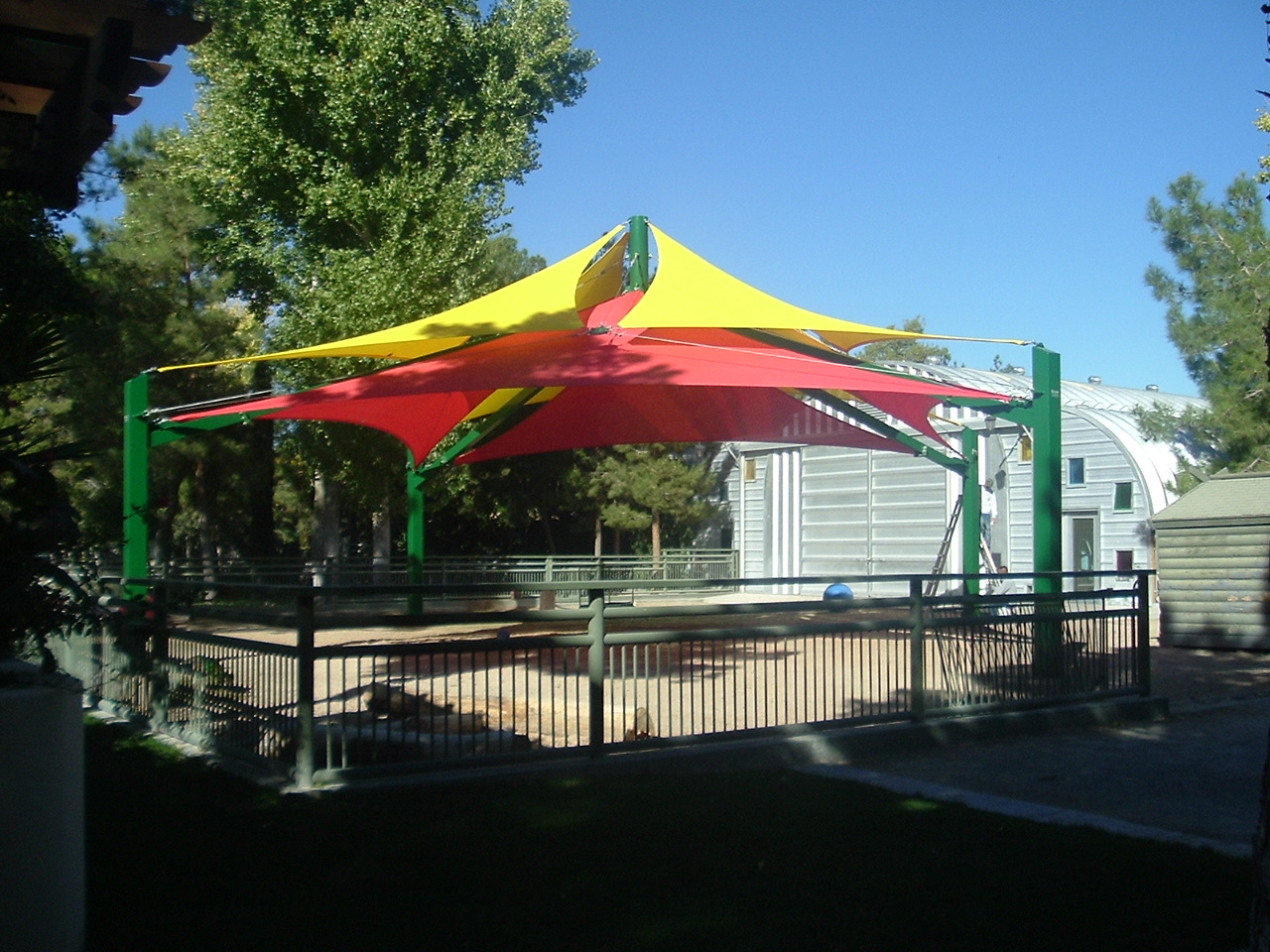With a new school year in full swing amidst the COVID-19 pandemic, school leaders are continuing to look for the best ideas to keep their students and staff safe through the implementation of social distancing practices. The number of COVID-19 infections among young people has already risen sharply since schools began opening their doors in late July, causing teachers and administrators alike to start looking for more practical social distancing solutions.
This list of social distancing ideas for schools will take into consideration the new reality of social distancing for schools across the country, including ideas for school bus safety, how to social distance elementary schools, middle schools, and high schools, socially distant classroom layouts, resourceful uses for outdoor and non-instructional spaces, and remote learning tips.
Read the full article or jump to a specific section:
- What Does Social Distancing Mean for Schools?
- Social Distancing Tips for Schools
- Explore Outdoor Classroom Shade Solutions From USA SHADE
What Does Social Distancing Mean for Schools?
“Social distancing” is the approach suggested by the Centers for Disease Control and Protection (CDC) to stop or slow the spread of an infectious virus like COVID-19. The CDC recommends keeping at least six feet of space between yourself and others to avoid close contact and prevent the potential spread of the COVID-19 virus. Social distancing is especially crucial for restricting unknowing viral transmission by asymptomatic spreaders.
With the novel coronavirus still spreading across the country, the ability for schools to social distance will play an essential role in keeping their communities safe. Because COVID-19 primarily spreads through airborne droplets from an infected person’s cough, sneeze, or saliva, schools and other public spaces must adhere to strict social distancing, routine surface cleanings, regular handwashing, and other hygiene measures until further notice.
To remain open and continue serving their communities, schools will need to follow proper social distancing practices by keeping students at least six feet apart and limiting up-close interactions. How can schools social distance? Decision-makers will have to get creative with maximizing the space they already have, and some might even consider expanding their building. As social distancing becomes the “new normal,” schools will need to begin looking for more permanent solutions, including structural additions.
Along with other suggestions, the CDC has recommended these guidelines for how to social distance at school:
- Socially distance desks: Put student desks at least six feet apart.
- Practice good hygiene: Have hand sanitizer in each room, post signs about proper handwashing techniques, and require masks when social distancing is not feasible.
- Avoid crowding hallways: Minimize movement throughout the building by restricting nonessential visitors and organizing students and staff into groupings that do not intermix.
- Regulate large gatherings: Cancel field trips and limit any events or extracurricular activities to those who can meet proper social distancing standards.
- Close communal-use spaces: Either shut down areas like cafeterias and playgrounds or stagger their availability and disinfect surfaces between uses. An alternative is to have students eat lunch in classrooms instead.
- Avoid high-touch materials: Keep students’ belongings separated from others’ and provide enough materials that pupils don’t have to share supplies.
Social distancing has brought many changes to schools and will require a great deal of planning from teachers, administrators, students, and parents. As school leaders continue adapting and learning social distancing tips for the classroom, it will be vital to encourage open communication and solicit input from everyone involved. By working together as a school community, schools can reimagine spaces and structures for learning while coming up with solutions to protect public health.
Social Distancing Tips for Schools
Because COVID-19 and social distancing are part of our lives for the unforeseeable future, schools must start adapting their spaces to accommodate. From the classroom to school buses, proper social distancing will be critical to maintaining students’ health. School leaders should develop sustainable strategies for long-term social distancing.
Here are eight social distancing tips for school layout planning this year.

1. Social Distance School Buses
For students who ride the bus to school, proper social distancing should begin before the first bell rings. Because a typical school bus holds about 60 student passengers, bus drivers should follow social distancing guidelines. A school bus could safely transport seven unmasked students seated six feet apart. But, when every passenger is wearing a mask, the bus can carry 28 students.
Along with spacing students appropriately, follow these strategies for social distancing a school bus.
- Distance drivers: In addition to wearing a mask and practicing good hand hygiene, school bus drivers should sit behind a Plexiglas barrier as an extra safety measure.
- Enforce safe hygiene practices: Provide hand sanitizer to passengers as soon as they board the bus and during the ride.
- Disinfect surfaces: Clean and disinfect the bus with EPA-approved disinfectants at least once per day, preferably between each route.
- Alternate seating: To keep students correctly spaced out, allow one passenger per seat, alternating left and right positions. Mark the seats with tape, so students remember where to sit each day. To maximize capacity, seat students from the same household together.
- Carry masks: School bus drivers should make spare, clean face coverings available to students so the bus can always reach its highest socially distant capacity.
- Open windows: Increase the circulation of outdoor air throughout the bus by opening the windows, as long as doing so does not present a safety risk and the weather permits.
- Keep a log: To make contact tracing easier, have school bus drivers keep a passenger log and assign a single driver to the same bus and same routes each day to minimize mingling among different groups.
- Social distance the bus stop: Use signs and tape on the sidewalk to ensure students and school staff stay at least six feet apart from each other while waiting for the school bus to arrive.

2. Social Distance School Hallways
Keeping students and school staff six feet apart is especially challenging in hallways as students arrive, leave, or switch classes. Assigning specific entry and exit doors and staggering dropoff and dismissal times are two more ways schools can minimize the number of students gathering around lockers and in hallways at one time. To streamline the halls and reduce the chance of intermixing groups of students while school is in session, label halls for one-way traffic.
As the world of education adjusts to a new reality, future school buildings will most likely need wider passageways to accommodate increased spacing and designate some corridors as permanent one-way hallways. Another strategy is to use outdoor walkways to enhance natural airflow and minimize the transmission of respiratory droplets. A shaded walkway could provide students the air circulation and cover they need to safely navigate their school campus.


3. Take a Hybrid Approach to Education
If you’re wondering how to social distance in a classroom and keep your school environment safe and healthy, consider using a hybrid approach that combines face-to-face and online instruction. An option that doesn’t involve having all the school’s students return at once can help make safety measures more manageable. There are many approaches to hybrid learning, with various options for different school sizes and building dimensions.
For example, if students attend school in person only two days each week and spend the other three weekdays learning online, half the students in a class could attend on Mondays and Wednesdays, while the other half attends in person on Tuesdays and Thursdays. By following this hybrid model, there will be smaller class sizes to allow for proper social distancing. As a bonus, Fridays could become an opportunity for everyone to learn remotely online while the school’s custodial staff deep-cleans the building.
An alternative hybrid approach could be to assign students to cohorts and have them attend face-to-face classes and online instruction on alternating weeks. One group could come to the classroom on weeks one and three of the month, while the other could attend in-person during the second and fourth weeks. When they’re not physically at school, the cohorts would learn online.
Weekly cohorting is an excellent strategy for social distancing schools because it means a smaller pool of people will be in the building each week, making contact tracing easier if necessary. The weekends would present an opportunity to thoroughly clean classrooms and hallways to get them ready for the next cohort’s arrival. However, keep in mind that some students might struggle with taking an entire week off from in-person instruction and adapt to the routine.
Regardless of what type of hybrid model you choose, a hybrid approach provides a dependable method for decreasing the school’s population density by cutting the number of students in the building in half. Working with fewer students in person will make it easier to follow social distancing protocols and maintain a healthy environment. Finally, many students and teachers have already adapted to learning and teaching remotely since COVID-19 emerged, so a hybrid model may not seem to be as much of an adjustment as it would have been before the pandemic began.

4. Social Distance Classroom Desks
Students spend most of their school day sitting at a desk. Maintaining a safe, six-foot distance between desks is crucial for minimizing the potential spread of viruses like COVID-19. Because longer, closer interactions increase the risk of respiratory droplets passing from person to person, the CDC recommends wearing masks and keeping as close to six feet of distance between people as possible when a full six feet of space is not feasible.
Here are some general guidelines for how to social distance classroom desks.
- Measure six feet: Place the desks six feet apart and put markers on the floor indicating the appropriate placement for each desk. These markers will make it easy to remember where to put desks if they shift or move around during deep-cleaning sessions.
- Immobilize desks: If the desks have casters, fix them in place to limit mobility and prevent the desks from drifting closer together.
- Use dividers: Movable whiteboards and cleanable Plexiglas dividers can act as protective barriers between student desks and teacher workstations. Be careful that you don’t block any fire safety or ventilation systems when placing dividers.
- Clear the room: Remove bookcases, worktables, and other non-essential pieces of furniture from the classroom to create more floor space to work with.
- Remember proper hand hygiene: Reserve a small section of space next to the classroom’s entrance for a hand sanitizing station.

5. Social Distance Classroom Design
If social distancing the desks in a classroom sounds daunting, there are some standard classroom design setups to follow. Although there is no one classroom layout with the power to resolve all COVID-19 safety and health concerns, specific design strategies will minimize the risk of spreading the virus. Furthermore, finding the right classroom layout can put students at ease and serve as a guide for adapting to the new normal.
Here are some creative ideas for a social distancing classroom setup that maintains six feet between desks.
- Teaching in the round: Putting desks in a large, evenly spaced circle can make it easier for everyone to see and interact with each other as long as the teacher is comfortable teaching from the center of the room.
- Team pods:Using a classroom design similar to office cubicles can properly position desks around dividers without blocking anyone’s view of the front of the room.
- Traditional learning setup: If the room is large enough to accommodate six feet between each desk, a typical classroom layout of rows of desks facing the instructor at the front of the room will still work.
- Clusters with dividers:For smaller classrooms, six feet between each desk may not be feasible. In this case, have students wear masks at all times and make the most of dividers by sectioning off small clusters of appropriately spaced desks.


6. Use Outdoor Spaces
One of the easiest ways for schools to practice social distancing is to convert outdoor spaces into learning, assembly, and eating areas. In addition to offering more room for proper social distancing measures, creating cafeteria and instructional spaces outside provides other health and safety benefits. Because the COVID-19 virus transmits far more easily indoors than outdoors, gathering students in outside spaces lowers the risk of spreading the virus.
Along with minimizing the risk of exposure or transmission the COVID-19 virus, outdoor teaching presents other educational advantages. Research has shown students who learn outdoors tend to perform better in school overall, such as achieving higher standardized test scores and having a more positive attitude toward school. Learning outside is also healthy and can support child development while decreasing stress levels and ADHD symptoms.
While using outdoor spaces for teaching solves one health concern, ensure the area has enough shade to avoid creating new health risks. Exposing children to too much sun could make them vulnerable to harmful UV rays, dehydration, sunstroke, overheating and other heat-related conditions. Shade sails and other shade structures are a simple solution to protecting students from the sun while creating a larger outdoor expanse suitable for conducting classes.


7. Use Non-Instructional Spaces
With the limited space available for proper social distancing in most classrooms, reconfiguring traditional non-instructional spaces into learning environments may be a solution. Larger rooms such as auditoriums, cafeterias, gymnasiums, media centers, and other underused areas can become the perfect makeshift classrooms to distance students. Because schools won’t be gathering large student groups in the unforeseeable future, these rooms could be an opportunity to expand classroom areas.
8. Prepare for Remote Learning
Remote schoolwork means schools need to be technologically ready to support online learning. As teachers take on the challenge of creating online lesson plans and developing remote education strategies, they will depend on their school leaders to provide the necessary remote teaching tools and reliable internet access. Using traditionally non-instructional spaces for teaching may also mean those areas need extra modifications to be suitable for online learning.
To help equip teachers for remote learning, school administrators can ensure their school building has these five components.
- Wireless connectivity: With the rise of online learning, Wi-Fi coverage has become essential. Save teachers and students many headaches by providing reliable wireless connectivity throughout the entire building, so everyone always has easy online access. If some areas in or around the building have weak Wi-Fi coverage, set up mobile hotspots to keep students connected, no matter where they’re learning.
- Adequate power: To ensure all electronic learning tools and devices have enough access to electricity, schools might need to outfit formerly non-instructional spaces with mobile power strips or outlets to supplement their existing power supplies.
- Mobile equipment: For schools using a hybrid approach, ensure teachers have items such as a laptop, mobile demo desk, and a cart with wheels to easily transport teaching materials to and from different instructional spaces. Teachers will also need movable equipment like a mobile whiteboard if they need to shift their writing so both in-person and online students can see it.
- Ample devices: Ensure there’s enough electronic equipment to go around and limit the sharing of devices like tablets and laptops.
- Cleaning supplies: Sharing computers and other electronic devices may be inevitable, but be sure the school staff has the right disinfectant supplies to thoroughly wipe down materials after each use.
Explore Outdoor Classroom Shade Solutions From USA SHADE
If you’re seeking social distancing solutions for your school, consider outdoor classroom shade options from USA SHADE. At USA SHADE, we have nearly thirty years’ worth of experience providing functional and aesthetic shade solutions for schools, universities, and early childhood centers. Our permanent shade structures are especially helpful for providing more social distancing opportunities for your school.
Choose from our wide variety of commercial shade sails, or start working alongside us to create a custom shade solution for your school’s outdoor classroom area by filling out this form. We follow a thorough procedure to walk you through each stage of the process, from initial shade designs to installation. When you work with USA SHADE, you’ll get a lasting partnership and a durable, high-quality product.
To find out more about how our shade structures can help your school stay safe, healthy and socially distant, contact USA SHADE today.





